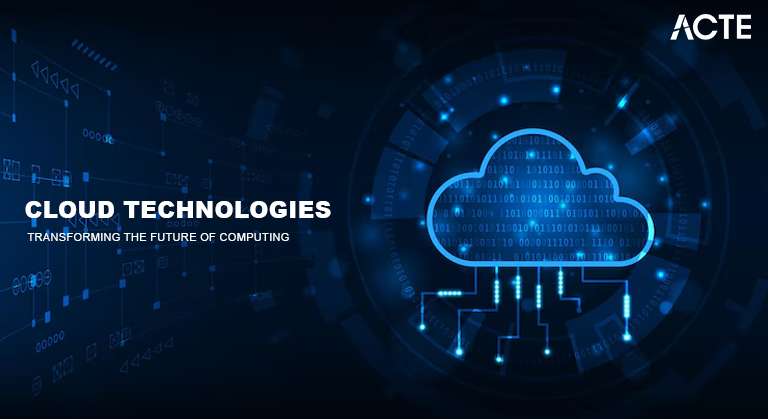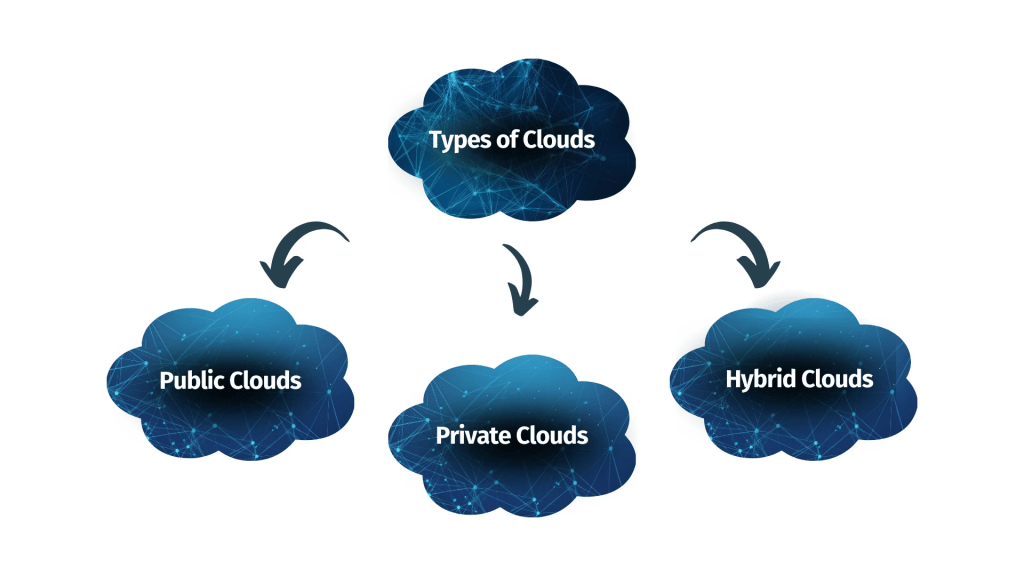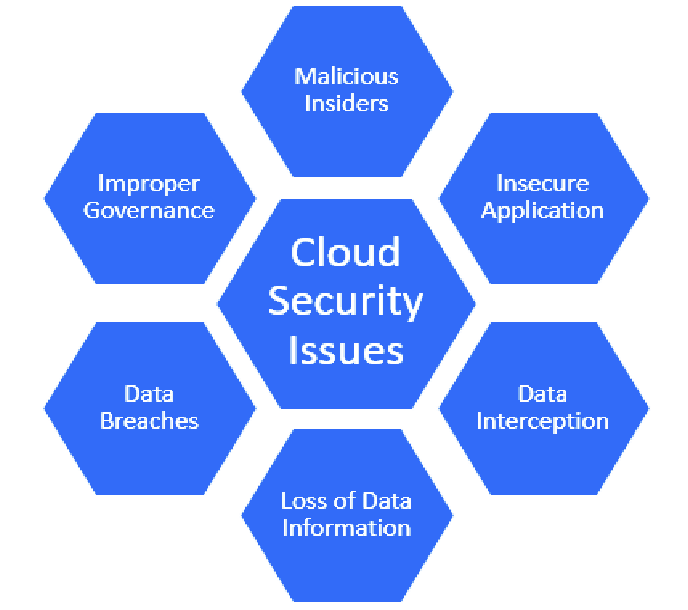
- Introduction to Cloud Technologies
- Types of Cloud Computing
- Virtualization and Its Role in the Cloud
- Containers and Orchestration Tools
- Cloud Security and Compliance Technologies
- Serverless Computing Overview
- Cloud Storage Technologies
- Cloud Networking and Connectivity
- Emerging Cloud Technologies (Edge, AI, etc.)
- Conclusion
Introduction to Cloud Technologies
Cloud technologies refer to a broad range of services and products that allow businesses and individuals to store data, run applications, and perform computing tasks over the Internet rather than relying on local servers or personal computers. The cloud is essentially a pool of virtualized resources, such as servers, storage, databases, networking, software, and Cloud Computing Course that are provided on demand. The key benefits of cloud technologies include cost savings, scalability, flexibility, and accessibility. Provides virtualized computing resources over the internet. Users can rent servers, storage, and networking hardware. Popular examples include AWS EC2, Microsoft Azure, and Google Cloud. Provides a platform for developers to build, deploy, and manage applications without worrying about underlying infrastructure. Examples include Google App Engine and Heroku. This type of service provides software applications over the Internet that are managed by the service provider. Examples include Gmail, Salesforce, and Dropbox. Cloud computing has revolutionized business operations by providing scalable, efficient, and reliable solutions. This allows organizations to innovate faster and reduce overhead costs.
Types of Cloud Computing
Cloud computing can be broadly categorized into three primary service models and several deployment models:
Service Models- Infrastructure as a Service (IaaS): Provides the foundation for cloud computing services, such as virtualized computing resources, networking, storage, and servers. With IaaS, users can rent IT infrastructure on a pay-as-you-go basis without needing to manage physical servers. Examples include AWS EC2, Microsoft Azure Virtual Machines, and Google Cloud Compute Engine.
- Platform as a Service (PaaS): This type of platform allows developers to build, deploy, and manage applications without dealing with the infrastructure. PaaS helps developers focus solely on the code. Examples include Google App Engine, Azure policy , and Heroku.
- Software as a Service (SaaS): This type of service provides fully functional software applications over the Internet. The provider hosts, manages and maintains these services, which users typically access via a web browser. Examples include Google Workspace (formerly G Suite), Microsoft 365, and Salesforce. Deployment Models
- Public Cloud: A cloud model where services are offered over the internet and shared across multiple organizations. Major providers like AWS, Microsoft Azure, and Google Cloud provide public cloud services.
- Private Cloud: A cloud infrastructure used exclusively by one organization. It can either be hosted on-premise or by a third-party provider. Private clouds offer greater control and security.
- Hybrid Cloud: combines public and private cloud models, allowing data and applications to be shared between them. This provides flexibility in scaling workloads while maintaining control over sensitive data.
- Community Cloud: Shared infrastructure for a specific community of users who have similar requirements, such as government agencies or research institutions. Each type of cloud computing offers unique benefits and can be selected based on an organization’s specific needs.

Virtualization and Its Role in the Cloud
Virtualization is the foundation of cloud computing. It refers to the technology that allows multiple virtual instances (such as servers, storage devices, or networks) to be created on a single physical machine. It abstracts the underlying hardware, providing flexibility and efficiency by enabling resources to be allocated dynamically and independently of physical hardware. enables multiple virtual servers to run on a single physical machine. This increases hardware utilization, reduces costs, and improves scalability. Combines multiple storage devices into a single virtual storage unit, improving resource utilization and simplifying Azure DNS Management . Abstracts the network layer, enabling the creation of virtual networks within a physical network. This improves flexibility and control over networking resources. Virtualization in cloud computing allows providers to offer scalable, flexible, and isolated resources. It enables the efficient sharing of physical hardware, optimizing performance and resource allocation.
Unlock your potential in Cloud Computing with this Cloud Computing Online Course .
Containers and Orchestration Tools
Containers are a form of lightweight virtualization that allows applications to run consistently across different computing environments. Unlike traditional virtual machines (VMs), containers package an application and its dependencies (e.g., libraries, binaries) into a single, portable unit that can run on any machine with the container runtime.
Benefits of Containers- Portability: Containers can run consistently in any environment, whether on a developer’s laptop, a test server, or in production, minimizing “it works on my machine” issues.
- Isolation: Containers provide process and file system isolation, meaning each application runs in its container, preventing interference from other applications.
- Efficiency: Containers use fewer resources compared to VMs since they share the host system’s OS kernel. This leads to faster startup times and reduced overhead. Container Orchestration involves managing and automating the deployment, scaling, and operation of containers. Orchestration tools help in managing large numbers of containers across distributed systems. Popular Orchestration Tools
- Kubernetes: The most widely used orchestration platform, Kubernetes Explained Features Benefits automates the deployment, scaling, and management of containerized applications. It ensures high availability and fault tolerance.
- Docker Swarm: A container orchestration tool that is integrated with Docker, providing clustering and management features for Docker containers.
- Apache Mesos: Another tool for managing containers, primarily used for large-scale distributed systems, enabling efficient resource sharing and application management. Containers and orchestration tools are crucial for modern cloud-native application development, enabling scalability, consistency, and reliability in cloud environments.
Cloud Storage Technologies
Cloud storage enables users and organizations to store data online, ensuring easy access, sharing, and backup. It eliminates the need for physical storage devices and provides scalable, cost-effective storage solutions. Object Storage Stores data as objects rather than files. Examples include Amazon S3, Google Cloud Storage, and Azure Blob Storage. It is ideal for storing unstructured data such as images, videos, and backups. Block Storage Stores data in blocks, similar to traditional hard drives. AWS Elastic Block Storage (EBS) and Azure Disk Storage are examples. Cloud Computing Course is suitable for databases and applications that require high performance and low latency. File Storage: Provides a file system interface, enabling users to store and share files over the cloud. Examples include Amazon EFS and Azure Files. Cloud storage also offers benefits like data redundancy, automatic backups, and easy access to stored data from anywhere.
Gain in-depth knowledge of Cloud Computing by joining this Cloud Computing Online Course now.
Serverless Computing Overview
Serverless computing is a cloud execution model where cloud providers manage the infrastructure and automatically allocate resources as needed. In a serverless architecture, developers write code without worrying about provisioning, scaling, or managing servers. Instead, they focus solely on the application logic.
How Serverless WorksIn a serverless model, developers define functions that respond to events, such as HTTP requests, database changes, or file uploads. The cloud provider runs these functions on demand, scaling them based on workload without the need for manual intervention.
-
Benefits of Serverless Computing:
- Cost Efficiency: You only pay for the resources you consume, eliminating the need to pay for idle servers. This can be especially cost-effective for sporadic workloads.
- Scalability: Serverless platforms can automatically scale up to handle more requests and scale down during periods of inactivity, ensuring optimal resource usage.
- Simplified Management: Since the infrastructure is abstracted away, developers can focus entirely on writing application code, improving productivity and reducing operational overhead. Popular Serverless Platforms
- AWS Lambda: One of the most popular serverless offerings, allowing developers to run code without provisioning or managing servers.
- Google Cloud Functions: Google’s serverless platform for executing event-driven functions.
- Azure Functions: Microsoft’s serverless offering allows developers to build applications triggered by events from various services.
Aspiring to lead in Cloud Computing? Enroll in ACTE’s Cloud Computing Master Program Training Course and start your path to success!
Cloud Security and Compliance Technologies
Cloud security refers to the set of policies, technologies, and controls that protect cloud-based systems, data, and infrastructure. Due to the shared nature of cloud environments, ensuring security and compliance is critical.

- Encryption: Protecting data both at rest (when stored) and in transit (during transmission) by using encryption methods such as SSL/TLS and AES.
- Identity and Access Management (IAM): Ensures that only authorized users and devices can access cloud resources. IAM includes features like multi-factor authentication (MFA), role-based access control (RBAC), and user permissions.
- Data Loss Prevention (DLP): Technologies and practices that prevent sensitive data from being leaked, lost, or accessed by unauthorized users.
- Firewalls and Intrusion Detection Systems (IDS): Network security tools that monitor traffic, detect malicious activity, and block unauthorized access.
- Compliance: Cloud providers must comply with various regulations and standards, such as GDPR (General Data Protection Regulation), HIPAA (Health Insurance Portability and Accountability Act), and SOC 2 (System and Organization Controls). Compliance frameworks ensure that cloud environments meet legal and industry-specific standards for security and privacy.
Cloud Networking and Connectivity
Cloud networking involves connecting various cloud resources and services to ensure seamless communication. It enables users to securely access applications, data, and services over the internet. A private network within the Top Cloud Databaseswhere users can configure IP addresses, subnets, and route tables to manage traffic between resources securely. CDNs distribute content (e.g., websites and videos) across multiple geographic locations to improve load times and availability. Examples include Amazon CloudFront and Azure CDN. Distribute incoming traffic across multiple servers to ensure high availability and prevent overloading a single server. Cloud providers offer private network connections (such as AWS Direct Connect or Azure ExpressRoute) to connect on-premise infrastructure with cloud environments securely. Cloud networking technologies enable businesses to create secure, reliable, and high-performance cloud environments.
Boost your chances in Cloud Computing interviews by checking out our blog on Cloud Computing Interview Questions and Answers!
Emerging Cloud Technologies (Edge, AI, etc.)
Emerging cloud technologies are pushing the boundaries of what is possible in the cloud, enabling new opportunities for innovation, speed, and efficiency.
- Edge Computing: Edge computing brings computation and data storage closer to the location where they are needed, improving response times and reducing bandwidth usage. It is crucial for applications requiring real-time processing, such as autonomous vehicles and IoT devices.
- Artificial Intelligence (AI) and Machine Learning (ML) in Cloud: AI and ML are increasingly being integrated into cloud platforms to enable businesses to build intelligent applications. Services like AWS-SWF Scalable Workflow Automation, Azure Machine Learning, and Google AI allow developers to leverage pre-built algorithms and create custom AI models without needing deep expertise in machine learning.
- Quantum Computing: Quantum computing promises to revolutionize industries by solving complex problems that are impossible for traditional computers. Cloud providers are starting to offer quantum computing platforms, such as AWS Bracket and IBM Q, to allow businesses to experiment with quantum algorithms.
- Blockchain in Cloud: Blockchain technology is also being integrated into cloud platforms, offering new solutions for secure, transparent, and decentralized applications. Cloud providers provide blockchain as a service (BaaS) to help organizations adopt blockchain without managing the underlying infrastructure.These emerging technologies are shaping the future of cloud computing and opening up new possibilities for businesses to innovate and grow.
Conclusion
Cloud technologies have revolutionized the way businesses operate, offering scalable, flexible, and cost-effective solutions for modern computing needs. By leveraging cloud platforms, organizations can enhance collaboration, improve efficiency, and ensure seamless data accessibility from anywhere in the world. The adoption of cloud services—whether through public, private, or hybrid models—enables businesses to optimize resource utilization, strengthen security, and drive innovation. Furthermore, cloud technologies support emerging trends such as artificial intelligence, big data analytics, and IoT, empowering industries to achieve digital transformation. As security measures and compliance frameworks continue to evolve, Cloud Computing Course remains a reliable and future-proof solution for businesses of all sizes. In conclusion, cloud technologies are no longer just an option but a necessity in today’s digital landscape. Organizations that embrace cloud solutions will gain a competitive edge, ensuring agility, scalability, and long-term success in an ever-evolving technological ecosystem.





